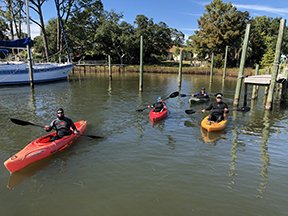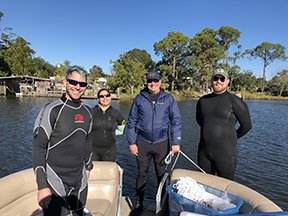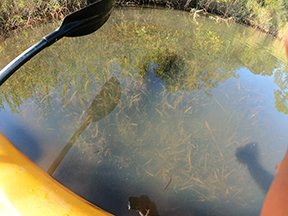FLORIDA SEAGRASS SURVEY – BAYOU CHICO
WRA has teamed with AECOM on a RESTORE Act project in Pensacola that is looking at the potential options for remediation of sediments in Bayou Chico. The Bayou is an urban system with a long history of industrial and commercial land uses that have left legacy pollutants in the sediments. We are responsible for the natural resource investigations associated with the project and coordinating permitting for the final remediation actions. As part of our research into existing natural resources in the Bayou we were tasked with determining what potential natural resources could be affected by potential remediation actions. Despite years of pollutant loading into the Bayou, recent observations of dolphins and manatees have provided hope that removal of the pollutant sources and untreated discharges may have been beneficial to the once barren bottomland. In Mid-October 2022, just as the first cooler weather arrived in Pensacola, Florida, WRA divers completed a full seagrass survey of the entire 303-acre waterbody. Using a pontoon boat with the capability to get into waters up to 18” our team of five completed a three-day field review of the entire shoreline and a single dredge material island adjacent to the Federal Navigation Channel. We targeted 35 areas with water less than five feet deep as potential habitat for seagrass presence. Our divers traversed 106 transects and sampled 783 discrete sample points. We did not expect to find any seagrass because of the historic pollution.
In this Florida seagrass survey, the team found seagrass at 137 sample points. Most of the seagrass identified was Widgeon grass (Ruppia maritima). The other submerged aquatic vegetation found was Tape grass (Vallisneria americana). In several locations the Widgeon and Tape grass carpeted the bottom in lush beds. Since we were measuring salinity and Secchi depth at each area, we have also been able to correlate the presence of seagrass with those two factors. The Bayou has salinities greater than 22 ppt throughout most of the area with a near shore anomaly of 12 ppt in an area that could indicate a spring inflow. No sea grasses were found at greater than 3 feet, indicating that light penetration is low in the Bayou waters.





